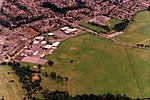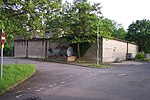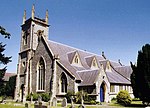Earley railway station

Earley railway station serves the town of Earley in Berkshire, England. It is 66 miles 1 chain (66.01 mi; 106.2 km) down the line from London Charing Cross via Redhill. It is on the Waterloo to Reading Line, and forms the last stop before the terminus of the line at Reading. The station has two side platforms, on either side of the twin track line. A large two-storey station building is situated on the Reading-bound (westernmost) platform. The two platforms are linked by a footbridge over the tracks, and the London-bound platform has a waiting room. The station is accessed by an approach road from the nearby main road between Reading and Wokingham, and on this approach is a terrace of three single storey cottages that were built for the South Eastern Railway at the same time as the station, to house railway staff and their families.
Excerpt from the Wikipedia article Earley railway station (License: CC BY-SA 3.0, Authors, Images).Earley railway station
Station Road,
Geographical coordinates (GPS) Address Nearby Places Show on map
Geographical coordinates (GPS)
| Latitude | Longitude |
|---|---|
| N 51.441 ° | E -0.918 ° |
Address
Station Road
RG6 7DY , Earley
England, United Kingdom
Open on Google Maps








